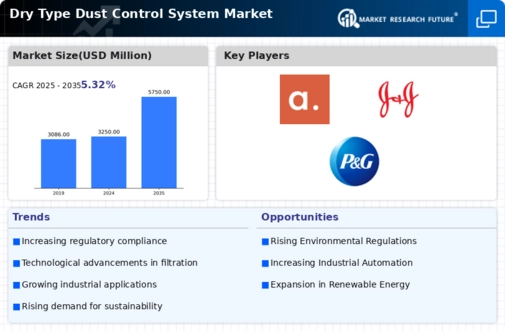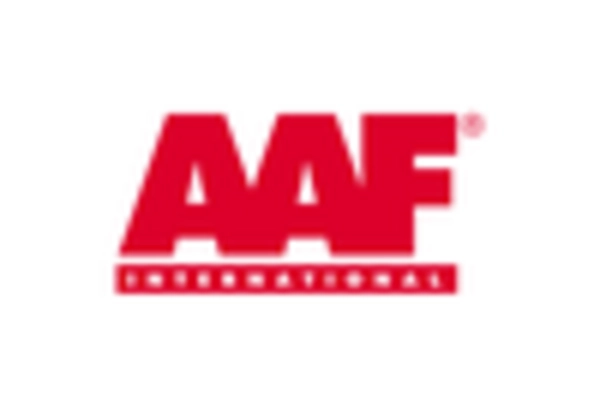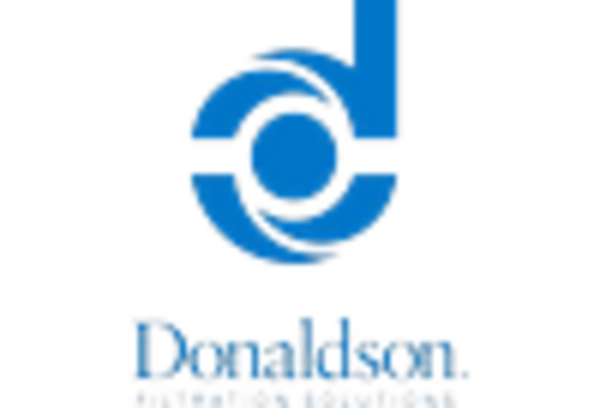Industrial Growth and Urbanization
The Dry Type Dust Control System Market is benefiting from rapid industrial growth and urbanization trends. As urban areas expand and industrial activities increase, the need for effective dust control solutions becomes more pronounced. Industries such as construction, mining, and manufacturing are major contributors to dust generation, necessitating the implementation of dry dust control systems. The market is projected to grow as these sectors expand, with an estimated growth rate of 5.0% over the next few years. Urbanization not only increases dust levels but also raises public awareness about air quality, further driving the demand for effective dust control solutions.
Increased Awareness of Health Risks
The Dry Type Dust Control System Market is also influenced by the growing awareness of health risks associated with dust exposure. As research continues to highlight the adverse health effects of airborne dust particles, industries are compelled to adopt effective dust control measures. This heightened awareness is leading to increased investments in dry type dust control systems, as companies aim to protect their workforce and comply with health regulations. The market is expected to see a growth rate of around 4.5% as organizations prioritize employee health and safety. This trend underscores the importance of effective dust control in maintaining a safe working environment.
Regulatory Compliance and Standards
The Dry Type Dust Control System Market is significantly influenced by stringent regulatory compliance and environmental standards. Governments and regulatory bodies are imposing stricter guidelines on air quality and dust emissions, compelling industries to adopt effective dust control measures. This regulatory pressure is driving the demand for dry type dust control systems, as they are often more efficient in meeting these standards compared to traditional methods. The market is expected to see a notable increase in adoption rates as companies strive to comply with regulations, which could lead to a market growth rate of around 4.8% annually. Compliance not only mitigates legal risks but also enhances corporate reputation, making it a critical driver in the industry.
Technological Advancements in Dust Control
The Dry Type Dust Control System Market is experiencing a surge in technological advancements that enhance dust suppression efficiency. Innovations such as electrostatic precipitators and advanced filtration systems are being integrated into dust control solutions. These technologies not only improve performance but also reduce energy consumption, making them more appealing to industries. The market for dry dust control systems is projected to grow at a compound annual growth rate of approximately 5.2% over the next five years, driven by these advancements. Companies are increasingly investing in research and development to create more effective and sustainable dust control solutions, which is likely to further propel the market forward.
Focus on Sustainability and Environmental Impact
The Dry Type Dust Control System Market is increasingly shaped by a focus on sustainability and reducing environmental impact. As industries face mounting pressure to adopt eco-friendly practices, the demand for dry dust control systems that minimize water usage and chemical additives is rising. These systems are perceived as more sustainable alternatives, aligning with corporate social responsibility goals. The market is witnessing a shift towards products that not only control dust but also contribute to overall environmental health. This trend is likely to drive a market growth rate of approximately 5.5% as companies seek to enhance their sustainability profiles while maintaining operational efficiency.


















Leave a Comment